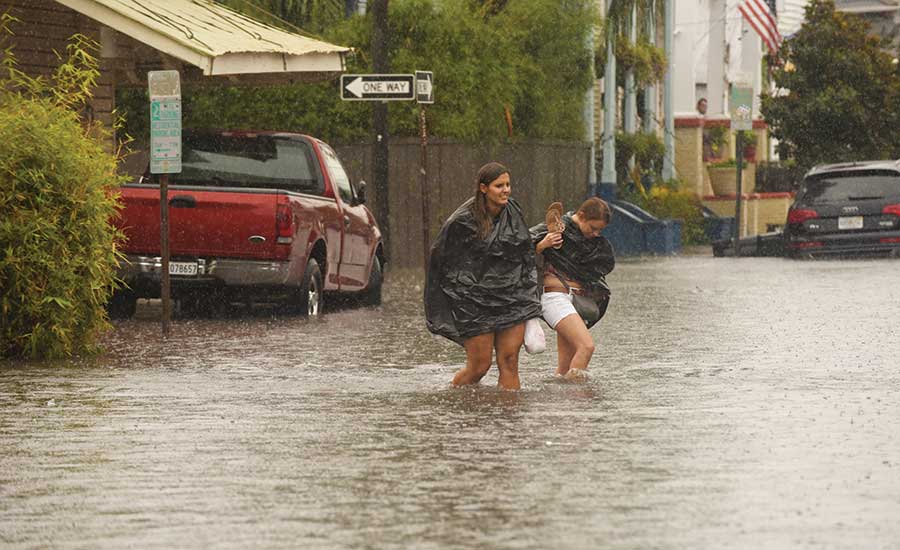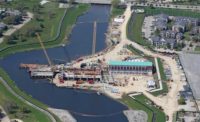The city of New Orleans will hire an independent team of engineers to evaluate the problems that led to severe flooding following an Aug. 5 rainfall of up to 10 in. The decision followed the revelation that 16 of the city’s pumps were not working, despite claims the system was at capacity. Further, the power system that operates those pumps was severely crippled.
At an Aug. 10 emergency meeting, New Orleans Mayor Mitch Landrieu (D) received approval to purchase equipment to repair the pumps, install 26 emergency generators and hire a third-party team to evaluate the problems and provide interim oversight of Sewerage and Water Board operations. Realizing that SWB has long-standing infrastructure problems, Landrieu says, “What I do not understand is that we did not make provisions to provide redundancy.”
The city will hire the third-party team through a bidding process. The city did not answer questions about how or when that bidding process would proceed. Landrieu said he does not intend to privatize the Sewerage and Water Board.
New Orleans, which is generally at or below sea level, is kept dry by more than 100 pumps that were designed at the turn of the 20th century. They can pump out of the city an inch of rainwater within the first hour of a storm and a half-inch per hour after that. The majority of the pumps are powered by five 25-Hz turbines that are more than 70 years old. On Aug. 5, only one of those turbines was in working order. When the pumps are at full capacity, the stormwater removal system is the largest in the country, able to pump 30 billion gallons of water a day. The system does not include the U.S. Army Corps of Engineers-built pumping stations put in place after Hurricane Katrina; those pumps remove water from canals after gates are lowered, preventing storm surge from Lake Pontchartrain.
As the political repercussions echo—the SWB director and several employees have been fired or resigned—some citizens and planners are calling for a reexamination of the city’s stormwater strategy.
Advocates of green infrastructure say finding more places to store the water during storms could take some pressure off the pumps. David Waggoner, a New Orleans-based urban and environmental architect who, after Katrina, has pushed for New Orleans to adopt a Dutch-based approach to stormwater management, said such efforts have been slow and sporadic. Right now, the city has an “overreliance on pipes,” he notes, adding that such a reliance on mechanical systems is foolish. Adding stormwater-holding capacity can buy time for the city’s pumps to catch up, he says.
But green infrastructure is not the sole solution to the problem, Waggoner adds. To reduce flooding, he advocates that, before renovations and other measures are taken, engineers review the system holistically.
Systems Approach
Hugh Roberts, the urban and costal resiliency lead for Arcadis North America, agrees. “Effective flood management requires integrated planning of infrastructure, both green and gray, to limit flood pathways; store and infiltrate precipitation where possible; and discharge from the systems by way of gravity where possible and with pumps where necessary. Comprehensive flood management systems are essential, and each system is only as strong as its weakest link,” he says.
Pumping the stormwater is also exacerbating the city’s problem with flooding as removal of the water causes the city to subside even farther, says Lewis “Ed” Link, a University of Maryland professor of civil and environmental engineering who led the forensic analysis of the levees in New Orleans after Hurricane Katrina. Link says the city would need a much different pumping system—costing billions of dollars—to deal with the amount of water it had on Aug. 5. While it would help to make more room for the water, Link adds, “When you get a belly-washer, there is still going to be flooding internally. That’s the reality for New Orleans.”






Post a comment to this article
Report Abusive Comment